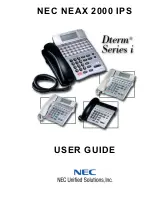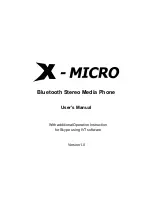
115
Performance optimisation
Gigaset SL75 WLAN / en / A31008-M700-B112-1-7619 / appendix.fm / 24.4.06
Ve
rs
ion05.
08.2
005
u
Volume setting (page 69)
The higher the phone/handsfree/ring-
tone volume, the shorter the standby
and talk times.
u
Codec/RTP packet length (page 89)
The shorter the packet length, the
shorter the standby and talk times.
The handset requires more power for
a Codec G.711 with 10 ms RTP packet
length than for a G.711 with 20 ms
packet length.
Other influencing factors include the tem-
perature and environmental conditions.
Range
The range of your WLAN handset is highly
dependent on the environment in which
you use it.
Factors that can significantly reduce the
range include reinforced concrete con-
structions, underfloor heating, plants,
other electrical devices as interference
(e.g. old microwaves).
The range for a WLAN handset is less than
that with a WLAN card for a PC. WLAN
cards are generally only used for data
operation. With data operation, packet
losses are permissible under certain condi-
tions. In voice operation, however, there
are higher requirements. The WLAN net-
work or coverage at home must be corre-
spondingly better. For voice, the "field
strength" at the location of the WLAN
handset must be 15 - 20 dBm better than
for data operation (guide value). For rea-
sonable voice operation, the field strength
(connection quality) at the WLAN handset
should therefore be at least -70 dBm. The
current connection quality is displayed in
the Web configurator's profile overview
(e.g.
User
¢
Profile Selection
).
In general you can increase the range of
your WLAN handset by using repeaters.
However, there may be performance
losses (e.g. crackling, cut-outs etc. during
roaming). Not all repeaters allow for clean
voice operation.
You may have to install a second access
point with the same SSID and the same
radio channel to increase the range. Your
WLAN handset can switch between the
access points without breaking the con-
nection (roaming).
Comments
u
The DTIM value determines when and
how often devices in a WLAN network
can be activated – in order to increase
the standby time of mobile devices.
The DTIM value is always a multiple of
the (TIM) beacon interval and should
be set to 5 for a beacon interval of
100 ms.
The standby and talk times are reduced
significantly if old WLAN routers/access
points that do not yet have this feature
are being used. It may be a good idea
to ask your manufacturer about a
firmware update (or visit the manufac-
turer's website).
u
The standby time refers to the time dur-
ing which the handset is completely
idle (no phone calls, no user action
such as creating directory entries etc.).
The talk time refers to the length of
time for which you can talk on the
phone. Both of these times depend on
the charge status of the battery, on the
influencing factors detailed above and,
last but not least, on the phone's his-
tory. Example: the talk time is signifi-
cantly reduced if the telephone has
already been in standby mode for some
time but has not been in the charging
cradle.
















































